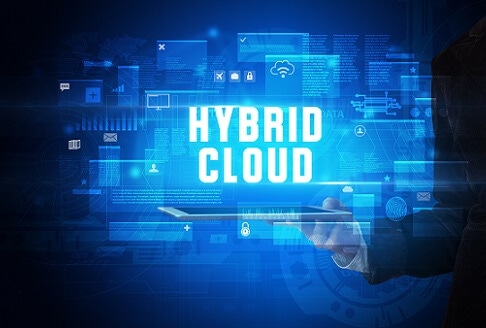The stage has been set for more cloud transformation with the role CIOs play in the equation continuing to evolve.

There may be more ways for organizations to adopt, adapt, and benefit from cloud resources as the acceleration of digital transformation shows little sign of letting up even with a possible end to the pandemic on the horizon.
Lessons learned by IT teams under pressure of coping with the COVID-19 outbreak stand to persist yet also change as enterprises prepare for potential returns to offices. Mike Kelly, CIO of Red Hat, shared with InformationWeek some of his insights on how cloud might be relied upon going forward and new considerations chief information officers may have to weigh in the process.
What is your view on how IT transformation continues to accelerate with respects to cloud? Where are we going from here?
[The pandemic] has been the ultimate forcing function. The cloud has been an amazing innovation in that it’s given us -- technology leaders and CIOs in particular -- the ultimate in choice, flexibility, and innovation to take advantage of like we’ve never been able to before.
Many of us bought into it early; the value proposition was clear. The use cases undeniably attractive. Those that had aggressive plans to move forward with or without the support of their underlying business partners are probably looking at this moment and wiping a bead of sweat off their foreheads.
People who got caught either flatfooted completely or more on their heels than their toes as it relates to providing resilience to their company, obviously are playing catchup.
Not to make light of the pandemic but sometimes it takes a shock to the system to really make forward progress. It’s accelerated out of necessity, though you never want to be in a position where you’re doing something out of necessity. That’s a painful process.
For me, it’s confirmation for how I thought I should be doing my job. For us as a company, it’s confirmation of our strategy that customers should embrace hybrid cloud to sustain themselves, grow, and innovate.
How has the CIO role evolved with the changing landscape?
We’ve been characterized in a lot of companies as the unsung heroes sometimes. I think the unsung hero has sung. All the things we’ve had to pay attention to over the years, and sometimes it’s difficult to get an audience. Things like disaster recovery were always critical for people’s jobs. It was typically a topic for the board to understand for business continuity. The pandemic really highlighted all of the things we’d been practicing over the years.
In good times, it is difficult to get overly excited about what could happen. When it does happen, the fact that you’re ready and things have been relatively event-free is a good feeling.
It’s given the job a heightened sense of importance.

Mike Kelly, CIO at Red Hat
Is there a sense of what architecture and infrastructure might look like in the post-pandemic world? How will hybrid cloud continue to evolve?
For me, as a practitioner, hybrid is really the only practical way to go. We’re in a world now where you have the ultimate in option value. I can deploy something on-prem in my own environment. I can deploy it in this cloud, that cloud, or a combination of all of them. Then I can have the tools and techniques I need to manage all of that effectively. For me, the hybrid road only accelerates from here. I don’t think anybody wants to have all their eggs in one basket. It’s too risky no matter how big or powerful that basket might be, or everybody else that’s in that basket.
People have a new sense of, “What happens if something breaks? What’s plan B?” I think hybrid has that built into its characteristics.
What are some next major tasks that may be ahead, from a CIO perspective, that are not pandemic-centric?
Certainly a focus on data and analytics, a focus on AI, process automation, process efficiency, and self-service are all big things CIOs are going to be focused on. Everyone is a technologist nowadays. You don’t need to come to the department, but the department needs to be there, so you have to meet people where they are. You hear things like platform-enablement or citizen developer model. We have to be more about enabling than controlling. The function for so long was an efficiency and cost containment-play and now it’s a differentiating, competitive advantage-play.
Related Content:
CIOs Face Decisions on Remote Work for Post-Pandemic Future
Ways to Help CIOs and CFOs Calculate Cloud Costs and ROI
The CIO’s Role in Setting the Remote Work Agenda
About the Author(s)
You May Also Like







